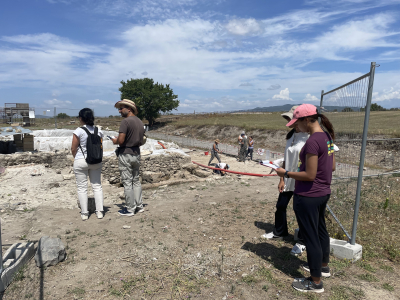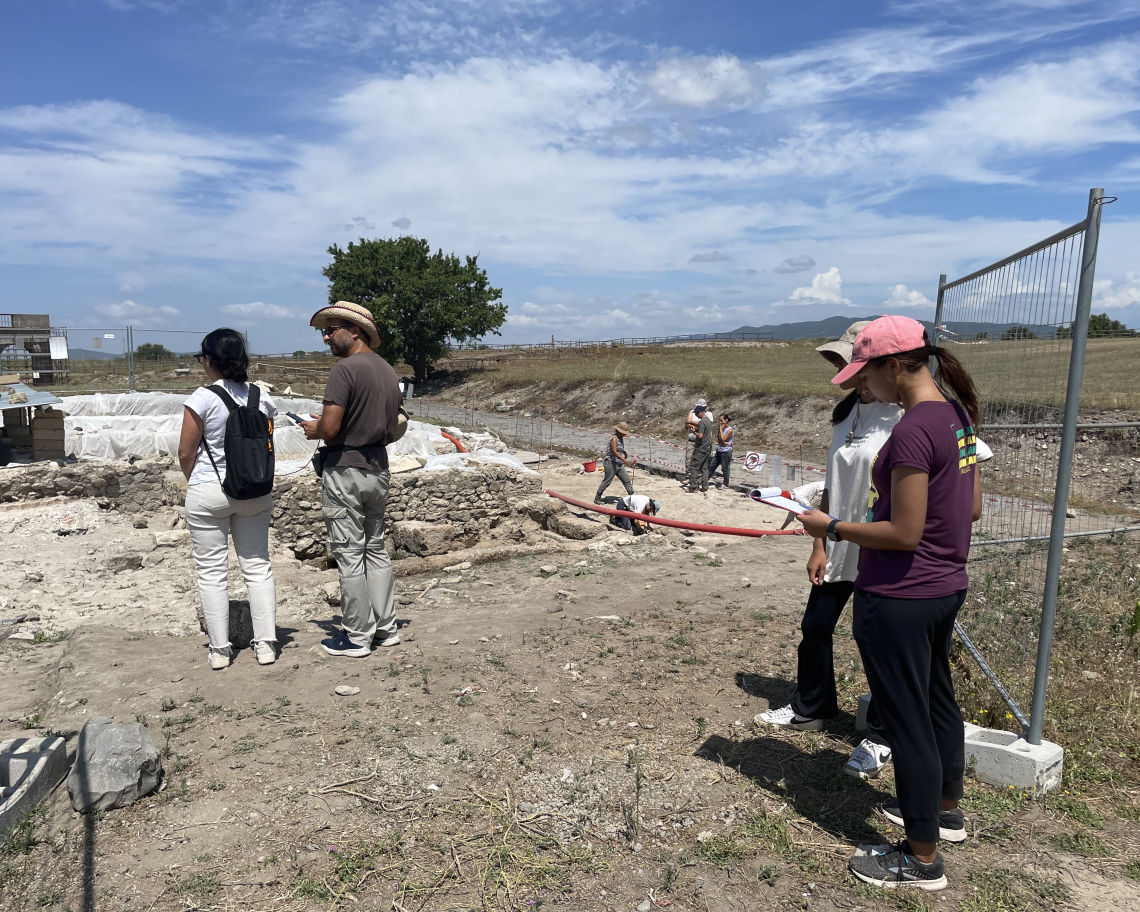
With the aid of the Research Travel Award, I was able to travel to Italy this summer to participate in data collection for Dr. Maurizio Forte’s Neurocities and Ruinscapes Bass Connections team, as part of the Vulci 3000 Project. Our work was primarily based in the archeological site at the Etruscan and Roman city of Vulci, though we did additional experiments in Rome. The main goal of the summer work was to collect eye-tracking data using the Pupil Invisible glasses, which will later be used to create a virtual reconstruction of the archeological site.
The glasses use tiny cameras to record an outward facing video of what the wearer is seeing, as well as inward facing recordings of the wearer’s pupils. The software uses the pupil movements to determine exactly where the wearer is focusing at each moment and it overlays gaze tracking points onto the video. We performed post-processing on the eye-tracking data and translated it into CSV files, which we sent to the Data+ team working with Dr. Leonard White for data analysis. We were also able to create heat maps that displayed areas where participants focused their gaze the most. In addition to the eye tracking data, we also studied the effect of Visual Thinking Strategies (VTS) on participants’ observation of the archeological sites.
The VTS questionnaire was meant to guide participants to observe the scene more intentionally and critically. We aimed to study differences in eye-tracking between those who completed a VTS questionnaire prior to the eye-tracking, and those who did not. I learned about the theory behind the strategy from Dr. Vincenza Ferrara, an expert in VTS from Sapienza University of Rome. Dr. Ferrara studies how VTS can be used to help medical students learn and, as a pre-medical student, I am so grateful for the opportunity to hear about her work directly from her.
This experience supplemented my Classical Languages studies by providing a tangible connection to the places and people I study in my classes. Our day in Rome where we conducted eye-tracking studies at the Tomb of Cecilia Metella and the Cestia Pyramid was especially engaging, as my classes have mainly focused on Roman history, so I was able to relate these experiences to my past studies. I was also able to interact with some of the graduate students who were working on the active excavation and hear their unique perspectives on Classics, as they were from Italy, Greece, and Portugal.
The funding from the Research Travel Award allowed me to participate in my first research project at Duke and I hope to use what I have learned to continue my involvement in research. This experience was especially rewarding because I was able to observe how the participants engaged with antiquities, since they had varied academic backgrounds. I also appreciate how the project is interdisciplinary because it involves an excavated city from the ancient world, eye-tracking and data analysis, and a psychological technique. Our on-site post-processing also expanded my proficiency with innovative technology like the Pupil Invisible glasses and accompanying software.

